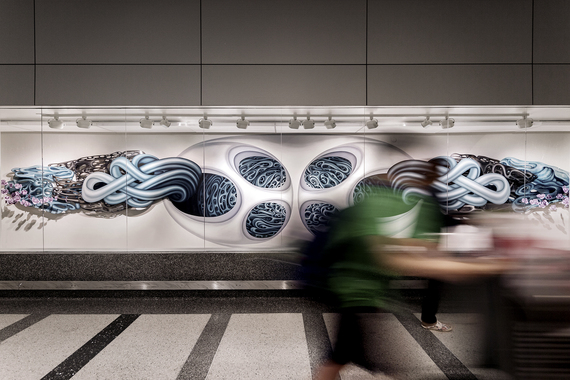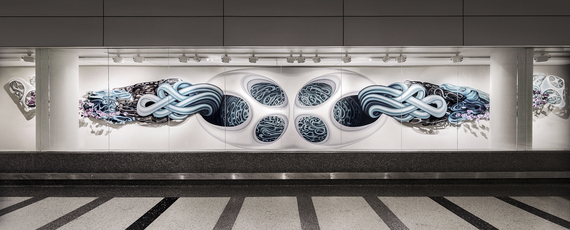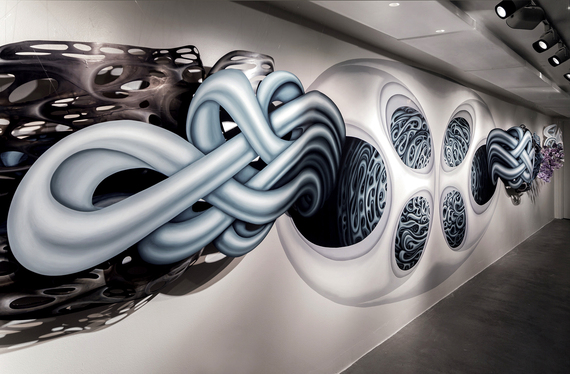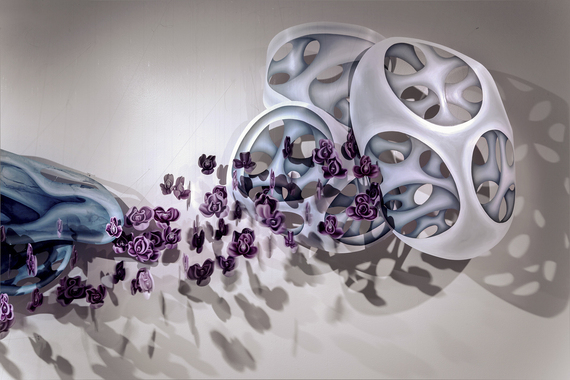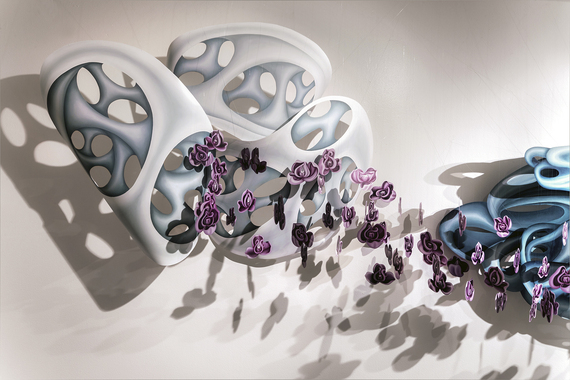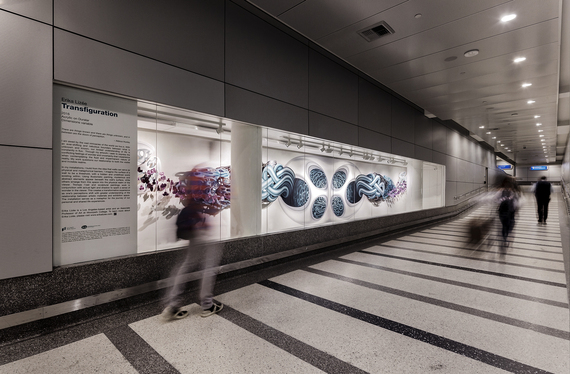Erika Lizée's exotic, illusionistic paintings extend into quasi-sculptural installations that nimbly occupy literal and liminal space at the same moment. They possess a haunting, seductive presence, using flawlessly executed trompe l'oeil to depict surreal, fantastical forms -- forms which in themselves blur all boundaries between the biomorphic and the abstract. The overall effect can be nothing short of transcendent, as the viewer negotiates the continuum of what is seen versus what is felt, and the mystery of what it is to be real.
In this spirit she conceived her newly opened LAX Airport installation, a site-specific encased mixed media mural in the international terminal. Transfiguration was greatly influenced by Aldous Huxley's book The Doors of Perception, and its perspective on the wall as simultaneously a barrier and a threshold, a physical and metaphysical plane, and a literal and allegorical place. Lizée's technical mastery of realistic, illusionistic rendering and her penchant for merging 2- and 3-dimensional elements fit this semiotic framework perfectly, as expressed in her ability to open pictorial space both behind and in front of the wall itself. Using ambient light, cast shadow, and the viewer's own movements to enhance the effects, she is inspired by installation artists like James Turrell, Andy Goldsworthy and Bill Viola. She's propped Huxley's door slightly ajar, and one can't help but take a step closer, crane one's neck, to try to get a look at the other side.
Lizée accomplishes all of this by painting on duralar but also frequently directly on the wall itself, and by including individual printed elements that protrude or dangle from invisible fishing line. She seamlessly links between wall and piecework, so that in places the articulation of space is actual, whereas in other parts, an illusion. She blends the contours of her forms to the point of patina, which feels like realism even as the forms themselves defy that category. In one respect her shapes read like creatures from another realm, sci-fi alien in a specific slithering, roiling, serpentine vernacular. In another, they read like portals of pure energy, mandala-like or inspired by the flying lotuses of Ukiyo-e, made of silvery smooth, voluptuous tendrils of undulating botanical coolness. They gather and radiate light, seeming sentient, or souled somehow. One half expects an ethereal voice to emanate in a song of strange language, which might be prayer.
None of this is by accident. For Lizée, evoking a sense of wonderment is an aesthetic strategy. Her intent is to find a way to represent energetic flux in concrete form -- to prompt the viewer to question and examine the quality of their own sense of perception. To access what Huxley called the "transfiguring mind" and its ability to "see the All in every this." It further speaks to another influence on Lizée's thinking, Suzi Gablik's The Reenchantment of Art. Lizée cites the following passage from the book with regard to the meaning behind her technique: "The visionary function, which fulfills the soul's need for placing itself in the vast scheme of things, has been suppressed, with the result that as a culture, we have lost the gift of vision." As Lizée says, she believes there is a "universal and ever-present urge for transcendence, for going beyond the mundane to experience the sublime. I hope to provide such an otherworldly experience." For Lizée, there's a biographical element to all this as well, in that she was raised Catholic and, while later shedding her dedication to the Church, recognized in herself that same longing for the sense of magic and mystery which religion had once provided. As Gablik noted, that kind of experience can be hard to find in a modern, secular society. But Lizée has found it -- in her art studio. And now she's holding the door open for anyone to enter.

